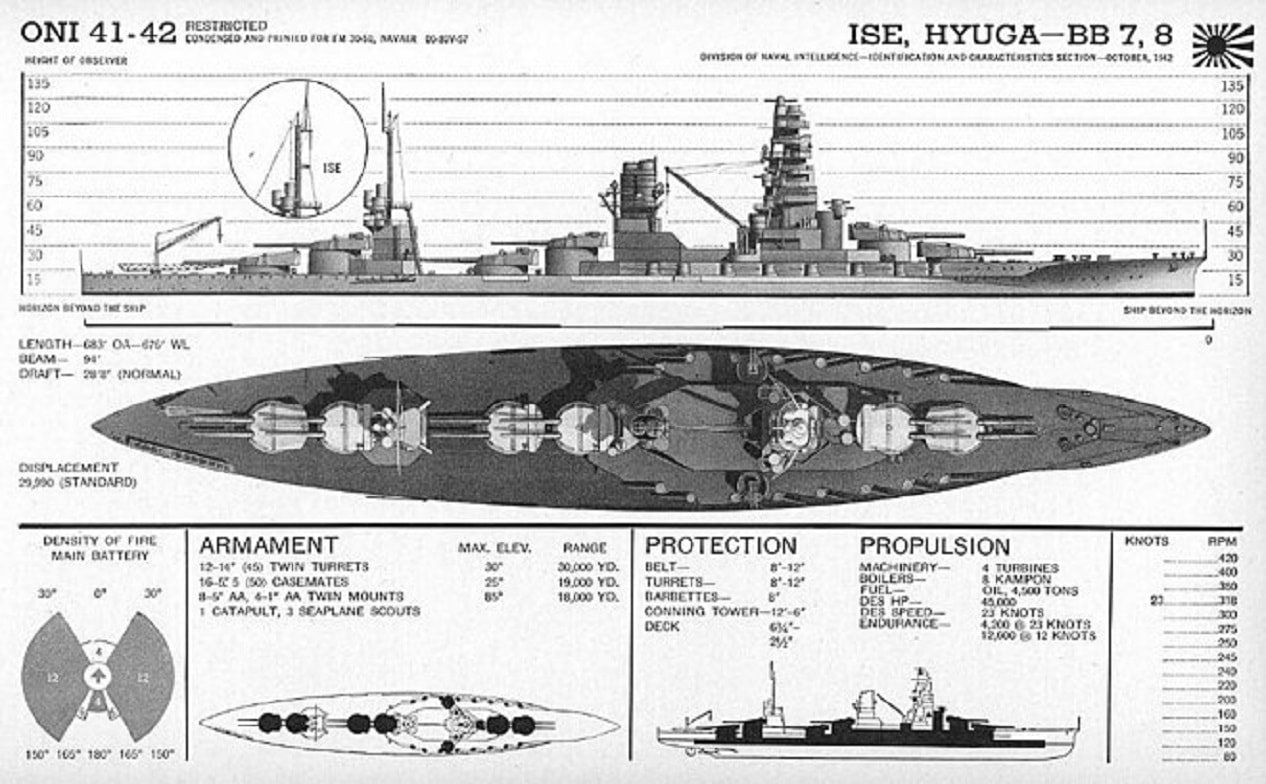The Imperial Japanese Navy’s Hyūga Was the Last Battleship Sunk in Combat: The second and last of the Imperial Japanese Navy’s (IJN’s) Ise-class, Hyūga has the distinction of being the last battleship to be sunk in combat.
She had survived until late July 1945 – and was in reserve status when she came under attack from American combat aircraft and was sunk in port in Kure Harbor. After the war, she was raised by U.S. occupation forces for final demolition in 1947.
Built as a conventional battleship, and named for the Hyūga Province in Kyushu, Japan, she was completed in 1918, but saw no service in the First World War. However, a number of her commanding officers went on to have long and distinguished careers in the IJN – and among those included Soemu Toyoda, Matome Ugaki, and Shoji Nishimura.
Modernized in the 1930s, Hyūga’s mixed-fired boilers were replaced with oil-fired boilers and turbines, which increased her speed to just over 25 knots. In many ways, she was made ready for the war to come. That included the addition of new anti-torpedo bulges while her six submerged torpedo tubes were removed. Moreover, the battleship’s anti-aircraft armament was greatly enhanced.
Early War Service and Conversion
Hyūga was among the IJN warships to provide escort during the Pearl Harbor operation in December 1941. The following May, her No. 5 turret exploded in an accident, killing 51 men. During those repairs she received the experimental Type 21 air search radar, and it was decided not to replace the damaged turret. Instead, Hyūga was fitted with four triple 25mm anti-aircraft guns.
The repairs were quickly completed, and she sailed with the IJN to provide escort for its attack on Midway. However, while she didn’t see any action in the subsequent battle, the terrible losses that the Japanese suffered – including the loss of four fleet aircraft carriers – resulted in the decision to convert both of the Ise-class battleships to carriers. Because of the urgency, the plan was subsequently modified, and the warships were converted to “hybrid battleship carriers.”
The conversion took place at Sasebo Navy Yard, Japan from May to November 1943, during which time the aft turret No. 6 as well as the barbettes from turret No. 5 were removed – and repurposed as coastal defenses. The ship’s anti-aircraft suite was further increased, while the length of the battleship was extended to accommodate the 70-meter-long flight deck. A central hanger was also installed along with elevator and catapults, enabling the ship to carry a complement of 14 Yokosuka D4Y catapulted torpedo bombers and eight Aichi E15A floatplanes.
The firefighting system was also enhanced, and the thinking was that a hybrid battleship-carrier would serve Japanese strategy in the Pacific. However, by the time the warship’s conversion was completed, Japan lacked sufficient pilots to man the full carriers. As a result neither of the Ise-class converted battleships were fully put to the test in combat operations.
In fact, because of a lack of combat aircraft, Hyūga wasn’t even deployed until August 1944 – when she joined Carrier Division 4. The warship was finally sent to see, where she was tasked with luring away the U.S. Navy’s carrier forces from the Leyte area. Hyūga participated in the Battle off Cape Engaño on October 24, 1944 under the command of Rear Admiral Kusagawa Kiyoshi, during which she suffered some minor damage.
Final Service
Returned to Japan for repairs, her catapults were actually removed as there were no aircraft available for service with the converted warships. Afterwards, she took part in subsequent actions near Singapore in early 1945 – where she and her sister Ise carried drums of oil and raw materials for the Japanese forces stationed there. After again returning to Japan, and lacking fuel for additional sorties, both battleships were relegated to the role of floating anti-aircraft gun platforms at Kure Harbor.
Hyūga was attacked several times at the end of July 1945, during which Rear Adm. Kiyoshi was killed in action. On July 28, her sister ship Ise was sunk during an American air raid. Later the same day, Hyūga‘s crew attempted to run her aground after the battleship was hit by multiple bombs.
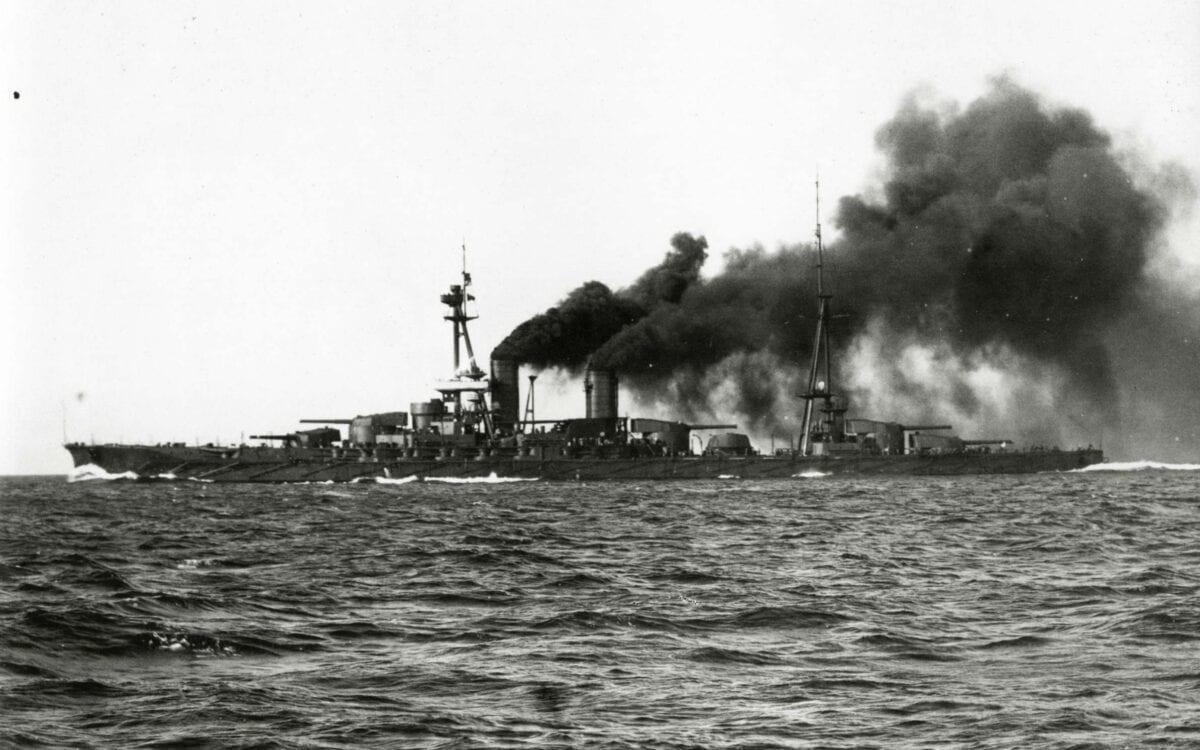
Battleship Hyūga.
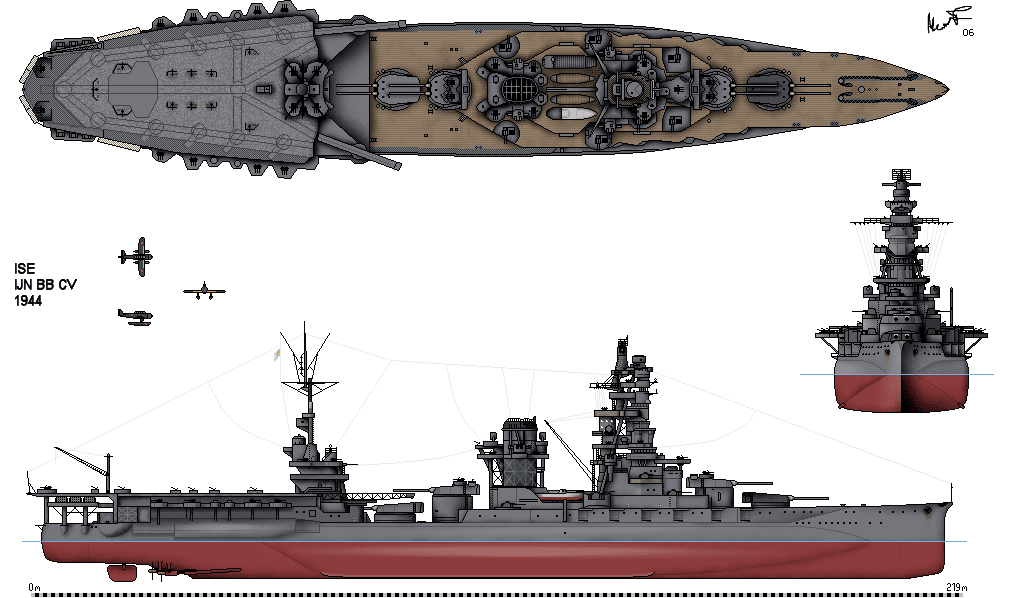
Battleship Hyūga
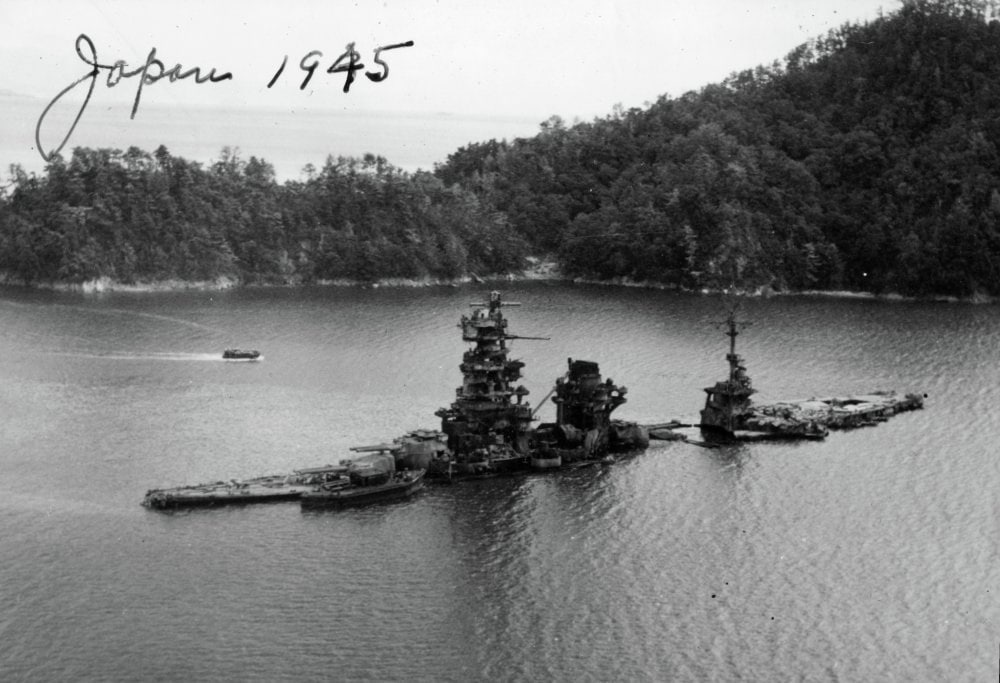
Battleship Hyūga
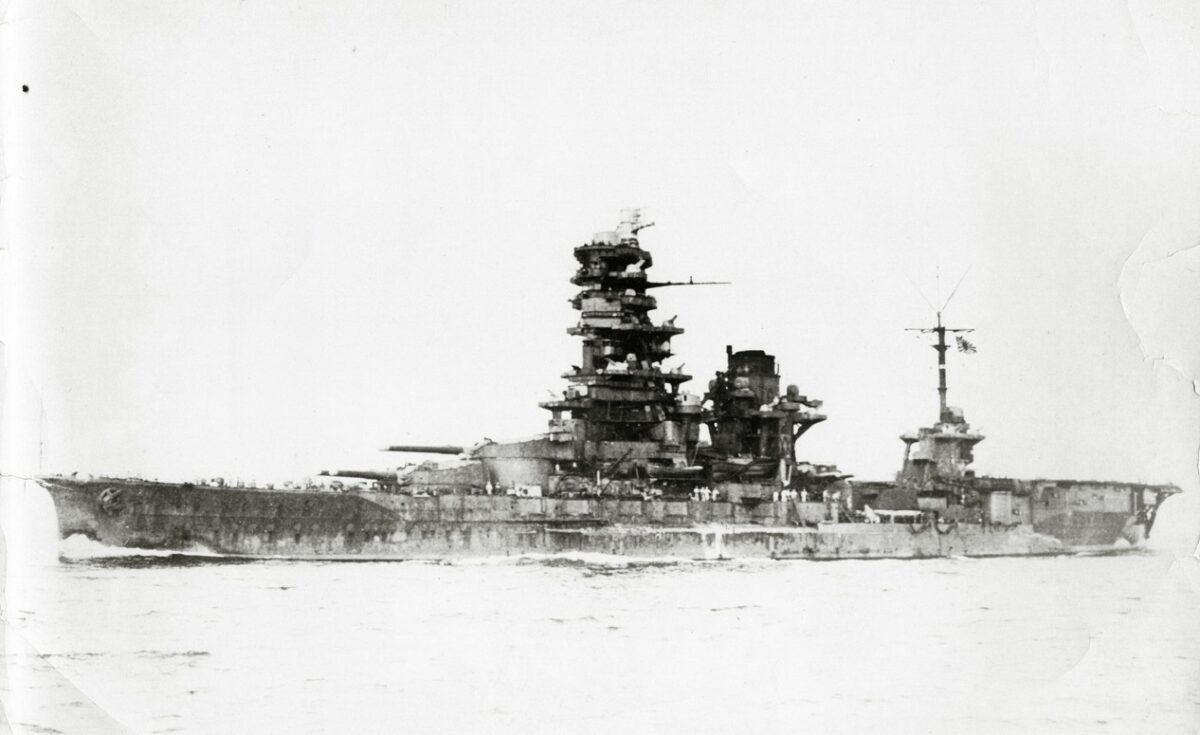
Battleship Hyūga
She subsequently sank in the shallow water of Kure Harbor – becoming the last battleship to be sunk in combat.
Hyūga almost became the last aircraft carrier to be sunk from enemy fire as well. However, just a day later, on July 29, the Unryū-class carrier Amagi, which was also in Kure, capsized and sank after taking numerous hits in the same American air raids.
Peter Suciu is a Michigan-based writer who has contributed to more than four dozen magazines, newspapers and websites. He regularly writes about military small arms, and is the author of several books on military headgear including A Gallery of Military Headdress, which is available on Amazon.com. Peter is is a Contributing Writer for Forbes.

